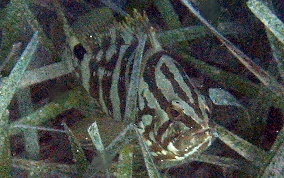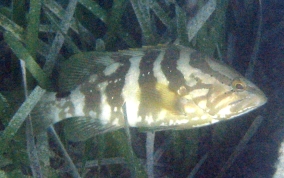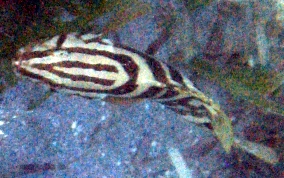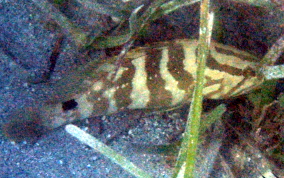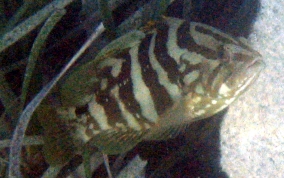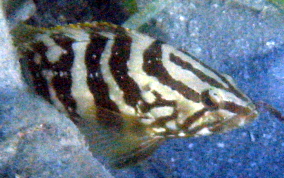Nassau Grouper
Epinephelus striatus
MAJOR THREAT: Over-fishing and habitat loss.
HABITATE:
Coral reefs. As our reefs die from warming ocean
waters and land erosion, this really cool and
important fish looses his home.
DIET: Mainly other fish and crabs .
SIZE: Growth to 48 Inches, weigh up to 55lbs.
See what happens when a
juvenile grouper
meets a lionfish.
The Grouper
is a large predatory coral reef fish. Most
of the groupers seen by snorkelers are the juveniles.
They will be seen resting in protected areas or
visiting cleaning stations where wrasse pick
parasites out of their mouths and gills. It also
camouflages itself in order to hide and ambush prey.
The Nausea Grouper would conceivably be one of the
primary predators of the
Indo-pacific
Lionfish, however low
grouper numbers will result in more lionfish reaching
breeding age, then even more Lionfish will be
preying on the baby grouper . It becomes a downward
spiral for our local species. It is estimated
that only 10,000 remain in the wild. When you
consider how big the ocean is, that's not very
many.
In the Cayman Islands, the eight year seasonal
fishing ban on endangered Nassau Grouper spawning
aggregation sites, which was set to expire at the
end of March 2013, was extended for another eight
years. The protections which began in 2003 prohibit
fishing for the species at spawning aggregation
sites between November and March (the reproductive
season).Efforts like these will help to
ensure the Nassau Groupers numbers to recover, but
the Grouper's habitat must also be protected.
ICUN
Status: Endangered
A2ad
ver 3.1
(needs updating)
Pop. trend:
decreasing
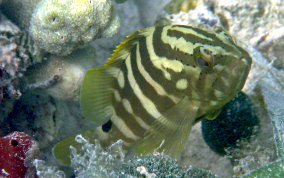

.jpg)
.jpg)
.jpg)
.jpg)
.jpg)
.jpg)
